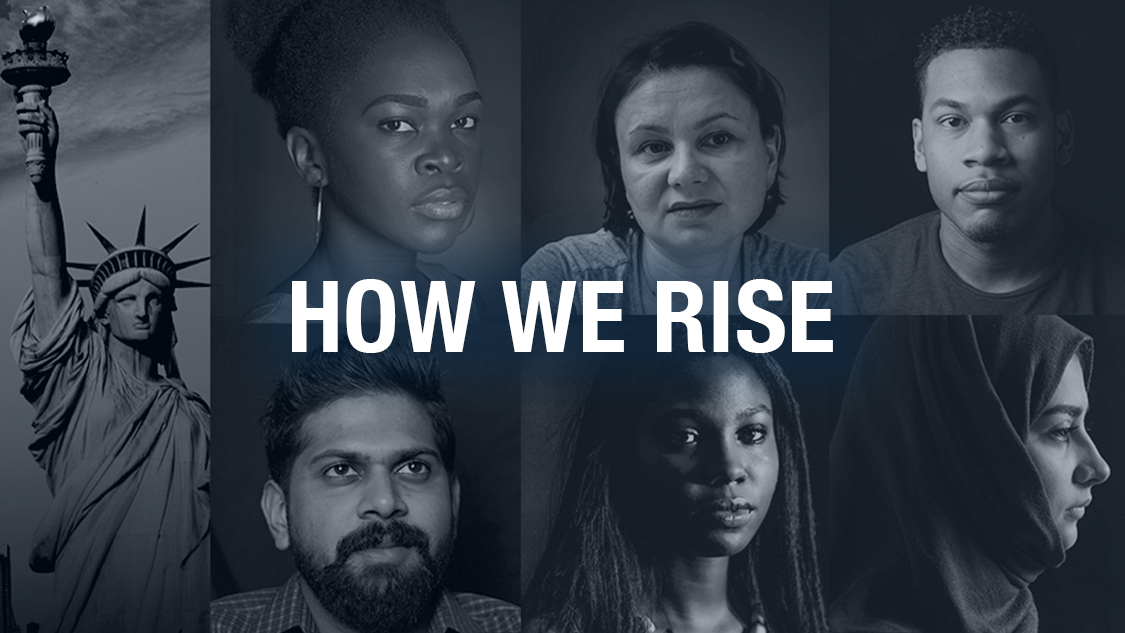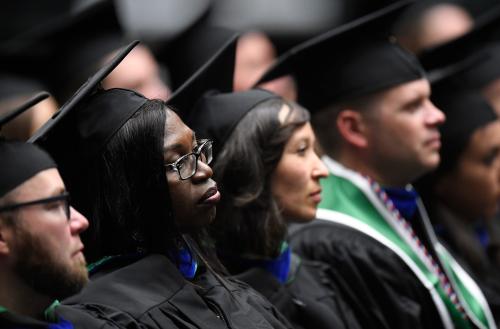For-profit colleges have a long history of engaging in manipulative behavior to preserve the flow of Title IV funds to their schools while providing their students a poor education. After the quadrupling of undergraduate enrollment in for-profit colleges from 2000 to 2010, Obama-era regulations led to the closure of some high-profile schools and a slight decline in enrollment overall. Now, four years of Trump administration deregulation along with the COVID-19 recession have created a “perfect storm for the resurgence of the for-profit sector”. The incoming Biden administration must prioritize regulating for-profits in order to protect students and taxpayer dollars.
For-Profits are more expensive and less effective
There is an immense amount of evidence that for-profit colleges yield higher debts and poorer labor market outcomes for students when compared to other forms of postsecondary education.
For-profit colleges only enroll 10 percent of students but they account for half of all student-loan defaults. 71% of students in for-profit colleges borrow federal loans, as compared to only 49% of students in 4-year public schools. The average amount borrowed by students in for-profit colleges is nearly $2,000 higher than the amount borrowed in 4-year public schools. These differences in borrowing can’t be explained by demographic differences among the student populations; instead, they are mainly caused by the fact that the average tuition at a for-profit college is over $10,000 higher than at a public community college.
Do the labor market outcomes of for-profit college students justify these higher expenses? The simple answer is no. Across a wide range of metrics, for-profit colleges underperform their peer institutions. When controlling for socioeconomic differences among students, study after study finds that the earnings and rates of employment of for-profit college graduates are lower than (or at best similar to) those of public college and non-profit college graduates. Even when compared to high school graduates that did not pursue a postsecondary education, there is no evidence that for-profit college graduates with associate’s degrees have higher earnings.
Some have argued that for-profit colleges may be better equipped to provide short certificate programs that train students for specific industries, so they shouldn’t be compared to traditional public colleges that mainly offer 4-year degrees. However, even if we only look at outcomes for certificate-granting institutions where most certificate programs are 18 months or shorter, we still see for-profit colleges severely underperforming. 90% of all certificate-granting for-profit institutions have a majority of their graduates earning less than the average high school graduate six years after their enrollment into the program. The for-profit college system offers poor outcomes at a high cost.
For-profits target Black and Latino students
The story of for-profit colleges is incomplete without a racial perspective. Black and Latino students make up less than one-third of all college students, yet they represent nearly half of all who attend for-profit colleges. This is a result of predatory recruitment tactics targeted at Black and Latino communities. Between 2017 and 2019 alone, nearly 24,000 federal fraud complaints were filed against for-profits for lying about employment statistics and graduate incomes.
Many of the poor outcomes we see among for-profits college students are even worse for the Black and Latino subgroup of students. Almost 60% of Black students who took on student debt to attend a for-profit school in 2004 defaulted on their loans by 2016, compared to only 36% of their white peers. For-profit colleges, more than any other type of institution, leave students in the position of taking on student debt while not having a degree to show for it. Among borrowers, Black and Latino students are much more likely to drop out at for-profit schools.

Trump scaled back on important regulation
Unfortunately, the Department of Education under Trump has scaled back on many regulations that were put in place during the Obama era to protect students and improve the outcomes of the for-profit sector. Last year, the Department of Education repealed the gainful employment rule, which stipulated that institutions could be disqualified from federal financial aid if a significant share of their graduates don’t earn enough to pay off their debt. The Trump administration also weakened the borrower defense rule, which established a process for cancelling student debt for students that have been defrauded by their schools. In 2018, the Department of Education changed the information displayed on the College Scorecard, a government website created to inform prospective students on the costs and performances of different schools. Data comparing the earnings of each school’s graduates to the earnings of high school graduates was removed, making it more difficult for students to make informed choices. Given the disproportionate amount of money for-profit colleges spend on recruiting and the predatory nature of their recruiting tactics, the government must step in to provide prospective students reliable information.
Biden administration must go beyond Obama-era regulation
There are two general approaches to reforming the for-profit sector. The first is an incremental approach. In its first 100 days, the Biden administration must prioritize reinstating improved versions of the Obama-era regulations to enact incremental change. Here are several actions the administration could begin to take on day one:
- Reinstate a revamped gainful employment rule: This rule is important because it holds institutions accountable for the outcomes of their graduates, which more closely aligns the incentives of students and for-profit colleges. For institutions whose graduates don’t meet a certain debt-to-earnings ratio, federal funds should be cut. However, as the rule was written under the Obama administration, it did “not hold institutions accountable for the roughly 40% of students who do not graduate.” A new gainful employment rule should be expanded to account for the outcomes of non-graduates as well.
- Amend the 90-10 rule: The 90-10 rule states that no more than 90% of for-profit college revenues can come from Title IV programs. This ensures that institutions are not entirely dependent on federal subsidies and can manage to attract at least some students who are willing to pay the full price of their education without federal aid. However, federal funds that come from the GI Bill and other programs run by the Department of Defense do not count towards the 90% limit for federal revenue. This loophole has led for-profit colleges to aggressively target veterans. An amended 90-10 rule should ensure that funds from the Department of Defense and the Veteran’s Affairs subsidy programs are counted as part of the allotted 90% of revenue that can flow from federal programs.
- Improve the College Scorecard: The College Scorecard has become less transparent over the past 4 years. It should be improved to clearly include data on graduate earnings relative to high school earnings as well as loan repayment rates for each school (which the Trump administration began to add in March) . This site is an important tool for consumers and it must be used to combat deceptive marketing strategies.
- Implement institutional risk-sharing: Many experts argue that institutional risk-sharing policies would better align the incentives of for-profit colleges with those of students. These policies require schools to pay the Education Department a percentage of students’ outstanding loan balances with negative outcomes. These policies should be accompanied with incentives for enrolling at-risk students so that the risk-sharing does not have the adverse effect of disincentivizing institutions from taking in higher-risk students.
The Biden administration should act fast on these issues and go beyond the level of regulation that existed during the Obama years. The policies listed above could improve the for-profit college sector by ensuring that federal funds only go towards effective programs and by helping students make informed decisions about their educational paths.
The second approach to reform is more targeted and forceful. There is enough evidence of poor performance in the for-profit sector to justify removing the entire sector from federal funds eligibility. Sherrod Brown and Elizabeth Warren’s Students Not Profits Act proposes to do exactly that. This approach is more viable than ever now that Democrats have gained control of the Senate.
The for-profit college sector has failed to prove its worth time and time again. Issues around racial inequity and the cost of higher education are at the forefront of America’s current political debate. Now is the time for the Biden administration to prioritize fixing the for-profit sector to make America’s higher education system better and more equitable.
The Brookings Institution is committed to quality, independence, and impact.
We are supported by a diverse array of funders. In line with our values and policies, each Brookings publication represents the sole views of its author(s).









Commentary
The for-profit college system is broken and the Biden administration needs to fix it
January 12, 2021